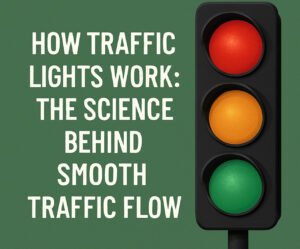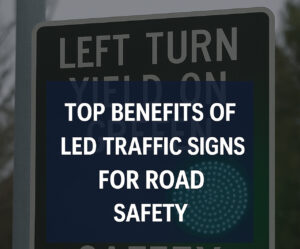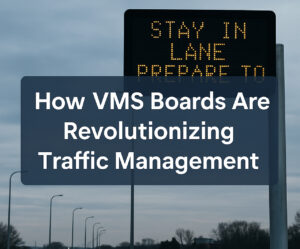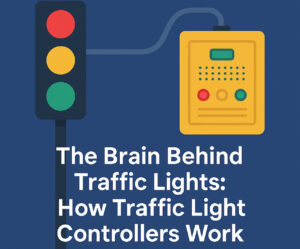When drivers see a radar speed sign flashing white light, it’s more than just a warning—it’s a smart piece of traffic technology designed to promote road safety. As cities and communities increasingly look to control speed without installing more speed bumps or issuing more tickets, solar powered radar speed signs are becoming the preferred tool. But before investing, many organizations want to understand the radar speed sign cost and how these signs actually function. In this article, we’ll break down the technology, features, and effectiveness of radar speed signs so you know exactly what you’re getting. Know more..
What Is a Radar Speed Sign?
A radar speed sign, also known as a driver feedback sign or speed display sign, is a digital sign that displays the speed of oncoming vehicles using radar detection technology. Unlike static speed limit signs, radar speed signs actively engage drivers by giving real-time feedback. The presence of a radar speed sign flashing white light often compels drivers to check and adjust their speed, making them more effective than passive signage.
Core Components of Radar Speed Signs
To understand how these signs work, let’s break down the main components:
- Doppler Radar Sensor: This is the heart of the unit. It emits radio waves that bounce off moving vehicles. By measuring the frequency shift (Doppler effect), it calculates the speed of the approaching vehicle.
- LED Display: Once the speed is detected, the LED panel displays the number. If the speed exceeds the limit, the radar speed sign flashing white light serves as an alert.
- Controller Unit: This manages power usage, LED output, and data collection settings.
- Power Source: Many modern signs use solar panels, leading to the rise of solar powered radar speed signs, which are energy-efficient and ideal for remote locations.
- Enclosure: Weatherproof casing protects all internal components from environmental elements.
How the Technology Works
Here’s a step-by-step of what happens when a car approaches:
- Detection: The radar sensor detects the vehicle’s movement and calculates its speed.
- Display Activation: If the vehicle is within the set detection range, the speed is displayed.
- Warning Activation: If the speed exceeds the programmed threshold, the radar speed sign flashing white light triggers, sometimes along with other visual alerts like “Slow Down” messages.
- Data Logging: Many signs record speed, volume, and time data for analysis.
- Power Management: In solar powered radar speed signs, solar panels charge internal batteries that operate the sign, allowing continuous performance without external power.
Benefits of Solar Powered Radar Speed Signs
The push for sustainability and cost-efficiency has increased interest in solar powered radar speed signs. Their benefits include:
- Low operational cost: No need for electrical grid connection
- Environmentally friendly: Clean, renewable energy
- Flexibility: Easy to install in rural or off-grid areas
- Reliability: Long battery life and low maintenance
Understanding Radar Speed Sign Cost
One of the most common questions from municipalities is about radar speed sign cost. Pricing can vary depending on several factors:
- Power options: Solar units may cost more upfront but save on electricity and wiring.
- Display size: Larger LED panels cost more.
- Mounting: Portable units are cheaper; pole-mounted permanent signs are more expensive.
- Extra features: Data collection, remote monitoring, and custom messages can raise costs.
On average, basic models range from $2,000 to $3,500. Full-featured solar powered radar speed signs with data tracking and cloud software can cost up to $7,000 or more. However, many users report a positive ROI due to fewer speeding incidents and reduced accident rates.
Installation and Setup
Installing a radar speed sign involves:
- Choosing a strategic location (usually areas with frequent speeding or pedestrian crossings)
- Mounting the unit on a pole or trailer
- Connecting the power source (solar panel or wired)
- Programming speed limits and thresholds
Most units allow for easy programming via Bluetooth or cloud-based apps. This flexibility lets traffic departments change speed limits or warning settings based on time of day or traffic patterns.
Use Cases for Radar Speed Signs
Radar speed signs are used in a variety of settings:
- School zones: Reinforcing lower speed limits during school hours
- Residential areas: Reducing speed without physical traffic-calming measures
- Construction zones: Warning drivers of lower speed limits in work areas
- Event parking: Managing vehicle flow and alerting speeders
The addition of a radar speed sign flashing white light in these areas dramatically increases compliance.
Data Collection & Traffic Analysis
Modern radar signs do more than just display numbers. They collect vital traffic data:
- Average vehicle speed
- Traffic volume
- Speed violations by time and date
This information helps traffic engineers and city planners make informed decisions. For example, if a spike in speeding is noticed during rush hour, they can implement targeted enforcement or adjust the sign’s settings.
The Psychology Behind Radar Speed Signs
These signs work because they tap into driver psychology. When drivers see their speed displayed—especially if accompanied by a radar speed sign flashing white light—they’re prompted to self-correct. Unlike tickets or fines, this method relies on voluntary compliance, which often has longer-lasting effects.
Studies show that driver feedback signs can reduce speeds by 5 to 10 mph. Even after the sign is removed, the behavioral shift can continue for weeks.
Maintenance Requirements
One of the perks of solar powered radar speed signs is low maintenance. Still, routine checks ensure maximum uptime:
- Clean the solar panel and LED display
- Check battery status
- Update software if cloud-connected
- Inspect the radar sensor for accuracy
Most systems alert users via their management software when maintenance is needed.
Regulations and Compliance
In most regions, radar speed signs must comply with local Department of Transportation (DOT) standards. These standards dictate:
- Sign size
- Reflectivity
- Speed accuracy tolerance
- Mounting height and angle
Compliance ensures your investment serves its purpose and avoids legal or regulatory issues.
Are Radar Speed Signs Worth It?
The combination of real-time feedback, data collection, and sustainability makes these signs a powerful traffic management tool. While the radar speed sign cost may seem high initially, the return in terms of improved safety, reduced speeding, and better community perception is significant.
Organizations and cities looking to improve road safety without aggressive enforcement find that solar powered radar speed signs are an ideal long-term solution. And for drivers, seeing a radar speed sign flashing white light often provides the nudge they need to slow down and drive safely.





